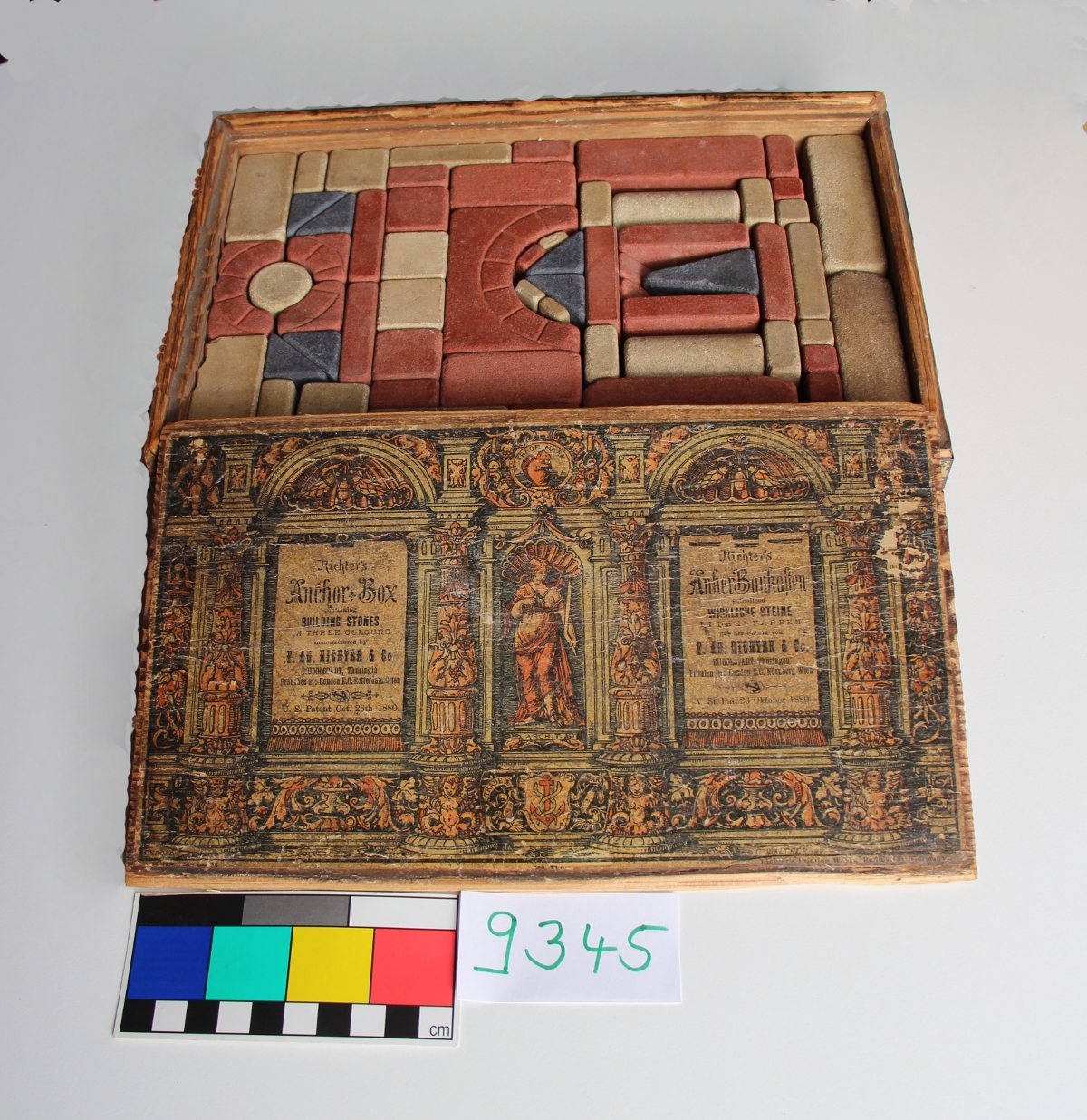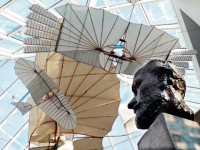"wirkliche Steine, Patent 26. Okt. 1880.
6 Vorlagen doppelseitig, Gebrauchsspuren, eingerissen.
"Folgekasten 4A "Sanduhr""
Ränder für Deckeleinschub 2-seitig abgebrochen
Die Idee der künstlichen Sandsteine wurde von Gustav Lilienthal als Mitarbeiter bei der Arbeit an Jan Daniel Georgens "neuem Kindergarten" entwickelt uund zunächst unter dem Titel "Das Bauen. Georgens neuer Kindergarten" mit dem Eichhörnchen als Warenzeichen vertrieben. F. Ad. Richter entwickelte daraus das Imperium "Anker-Steinbaukasten". Das frühe Exemplar des Baukastens trägt noch beide Warenzeichen, das Eichhörnchen und den Anker.
en


